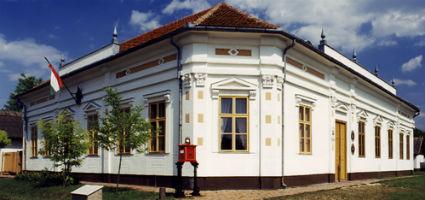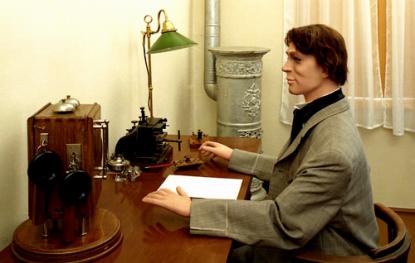2024. May 3. Friday
The Post Office Museum in Ópusztaszer - Ópusztaszer
 |
Address: 6767, Ópusztaszer Ópusztaszeri Emlékpark, Szoborkert 68.
Phone number: (62) 275-133, (62) 275-150
E-mail: info@postamuzeum.hu
Opening hours: 01.04-31.10.: Tue-Sun 10-18
|
Museum tickets, service costs:
|
Ticket for adults
|
750 HUF
|
|
|
Group ticket for adults
(11-20 people)
|
7500 HUF
|
|
|
Ticket for students
|
375 HUF
|
|
|
Group ticket for children
(11-30 people)
|
3750 HUF
|
|
|
Ticket for pensioners
|
375 HUF
|
|
|
Ticket for families
|
1500 HUF
|
/ family
|
The Post History exhibition opened in 1987 in Ópusztaszer was added a new ward in 1996, on the 1100th anniversary of the Original Settlement. The new ward commemorates the telephone man, Puskás Tivadar.

The exhibition shows the personality of Puskás, his career via his invention, an operable telephone exchange.
Puskás Tivadar improved the switchboard and invented the telephone exchange with which his name listed in universal history. His invention, the telephone exchange, was the ancestors of the modern cable system. He provided service for the subscribers in Budapest in the year 1893 with which people of the world could have access only 25-30 years later when radio was invented.
The reporters of the telephone exchange reported on events in town, fire, storm etc. They either called the editor office or sent a telegram message. The news was red by newscasters. The studio was often connected to the Opera House, theatres, concert rooms, bars from where shows were broadcasted to the subscribers.
About the telephone exchange pageants on the walls inform the visitors. We also show authentic interior reconstructions about the telephone exchange.

The exhibition shows the personality of Puskás, his career via his invention, an operable telephone exchange.
Puskás Tivadar improved the switchboard and invented the telephone exchange with which his name listed in universal history. His invention, the telephone exchange, was the ancestors of the modern cable system. He provided service for the subscribers in Budapest in the year 1893 with which people of the world could have access only 25-30 years later when radio was invented.
The reporters of the telephone exchange reported on events in town, fire, storm etc. They either called the editor office or sent a telegram message. The news was red by newscasters. The studio was often connected to the Opera House, theatres, concert rooms, bars from where shows were broadcasted to the subscribers.
About the telephone exchange pageants on the walls inform the visitors. We also show authentic interior reconstructions about the telephone exchange.
